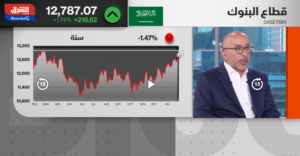Whether buying property or picking stocks, 2023 provided a learning curve
One of the questions most asked these days is the difference between buy- and sell-side.
Brokers, analysts and eve fund managers tout their own investment products, regardless of market conditions. Their conclusion is always on adding to the purchases, and in the process tally up their wins and losses, making decision-making comparable to sports.
This is why most of the commentary regarding real estate and capital markets has to do with past performance. There is no doubt that Dubai and the UAE has had a phenomenal year when it comes to real estate as well as capital markets, setting the stage for further activity.
Seeking the best outcomes
Investing is game of process as much as it is of outcome. And this is where the buy-side distinguishes itself from the sell-side of the industry. The buy-side industry will seldom make investment decisions without having their own money involved.
This necessitates a certain degree of caution that gets built into the decision making, because they will not limit themselves to calculating short-term incremental returns as the sole measure of their investment ability.
They will not participate in fads like NFTs (some fads last longer than others), but rather view investment as a continuum of process that begins with value discovery. There will be long periods where assets remain undervalued. (Japan is a case that springs to mind.)
As well as equally long periods of market mania. Arguably the US equity markets are still in that phase, with real estate already starting to buckle.
These periods end.
With a widening gap between ready and offplan prices, there can be no doubt that mean reversion will kick in.
In the UAE, likewise the buy-side industry will seldom suggest a buy everything approach. The only similarity between business driven investors and athletes is both aspire to achieve excellence. To do so, athletes, like investors, are perpetually interested in gaining knowledge.
As we enter 2024, the investment landscape is markedly different. From the introduction of the UAE corporate tax, to a continuation of IPO activity, and an influx of real estate projects, there is a time to take stock and reflect on the dynamics at play.
Getting crowded in luxury
In real estate, there can be little doubt that there appears to be a crowded field, especially in the luxury segment. With inflation still tilted probabilistically to the upside, there has to be a focus on where value opportunities are.
With a widening gap between ready and offplan prices (a near doubling in certain areas such as JVC and Arjan), there can be no doubt that mean reversion will kick in.
In the capital markets, with the rush to go public, the retail investor has already voted with his money given the record levels of oversubscription, such as for Dubai Taxi and PureHealth.
If anything, levels of oversubscription have increased as more investors jumped on board. However, even as corporate activity picks up, not all businesses will end up being winners.
Just as every real estate developer claims that its project offers the best value for money, so do companies rushing to go public. True value will only be determined in areas where the barriers to entry are high and/or the managerial excellence is inbuilt into the DNA of the company that defines corporate longevity by way of competitive advantage.
Timing is all
In real estate as well as in capital markets, that yardsticks helped investors well post-Covid. They would be wise to not forget that in 2024 as Joseph Schumpeter’s ‘perennial gate of creative destruction’ accelerates.
There can be no arguing that the UAE offers compelling value relative to most markets in the world. That is not to say that every investment will be the right one. Investment is a process is recognizing that there is no such thing as buy at any price, or for that matter buying for ‘flipping’ or short-term gains.
The challenge is to get the right asset (real estate or stock) at the right price. After that, compound interest kicks in. No broker or analyst will ever prescribe that.
In the final analysis, the small investor is the ultimate ‘buy side’. That is the proverbial lesson of 2024.
Sameer Lakhani
The writer is Managing Director at Global Capital Partners.





